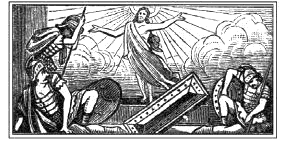

For many of the items here in the Thesaurus it is difficult to assign a date of composition.
Authorship of many of these prayers is unknown and in some cases a matter of speculation. While oftentimes a
rough estimate of the period of composition of a piece can be made based upon its appearance in manuscripts of
a given period, even that has its problems. Many items have evolved over the centuries making the assignment of
dates a subjective task. The Ave Maria is perhaps a good example of this type of evolution. It first appeared
in the 5th century, but its final form did not come about until the 16th century. Whether one assigns its
composition to the 5th century or the 16th century, one will be open to a certain amount of justifiable
criticism.
Nevertheless it is instructive to try and categorized the approximate period of composition
of many of these items to get a better appreciation for their origins and place in history. Moreover, while the
dating of many pieces is problematic, it is equally true that many pieces can be accurately dated since their
authorship is well known. Where possible I have assigned a piece to a particular period. There are two criteria
that I have used in assigning a given piece to any particular period. The first criterion is that there is
reasonable historical evidence that the item in question really was around then. The second criterion is the
piece was in a form recognizable to the final composition we have today. That leaves a certain amount of
subjective judgement in some cases, but the point of this time line is not to present an exact time line, but
rather to give an appreciation of the continuity of traditions in the Church down through the
millennia.
Lastly, it should be noted that not all the entries in the Thesaurus have been categorized
here. There are numerous pieces which have so little data available on them that it would be best to leave them
out of this index.
-
1 AD - 200 AD
-
200 AD - 400 AD
-
400 AD - 600 AD
-
600 AD - 800 AD
-
800 AD - 1000 AD
-
1000 AD - 1200 AD
-
1200 AD - 1400 AD
-
1400 AD - 1600 AD
-
1600 AD - 1800 AD
-
1800 AD - 2000 AD
-
2000 AD - current





